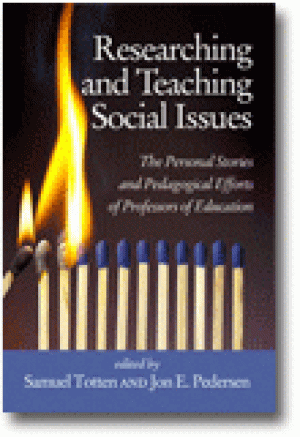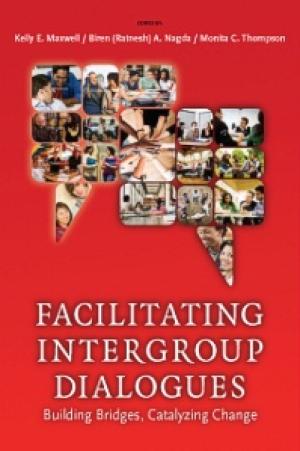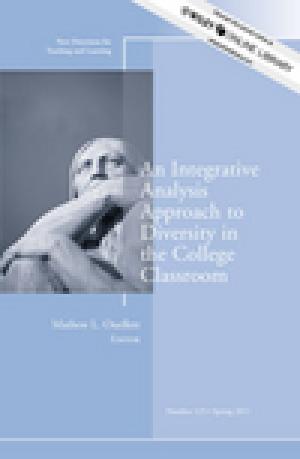Resources
Postcolonial biblical scholars use the hermeneutics of decolonization to reinterpret the biblical text. One goal is to find contemporary applications for an age-old message. This article explores the challenges and implications of postcolonial hermeneutics for biblical pedagogy. First, the author explores fundamental hermeneutical principles of postcolonial biblical criticism. Then she reviews its challenges for a liberative biblical pedagogy. Finally, the author applies these principles to a Bible study using the story of Hagar.
This essay highlights a range of questions that arise when white suburban students engage urban neighborhoods of poverty and color in the United States. How can involvement in an “other” context move beyond “educational tourism”? The essay presents a pedagogical style that raises questions of the kind of socialized body one inhabits: either one shaped by presumptions of control and rights of academic observation, or one mobilized to risk involvement in a differently communalized episteme. And while the pedagogy described may not be replicable by faculty who do not share the author's background or cross-cultural orientation, the rhetorical style of the essay itself enacts the tensions that this pedagogy contends with: the efforts of a white male educator – altered by decades of inner city involvement – to open “white” space in the classroom to other norms of embodiment and other modes of learning. Here is the necessity and impossibility of moving beyond “educational tourism.”

Researching and Teaching Social Issues: The Personal Stories and Pedagogical Efforts of Professors of Education is comprised of original personal essays in which notable teacher educators delineate the genesis and evolution of their thought and work vis-a-vis the teaching of social issues. In relating their personal stories, the authors were asked to discuss among other issues those individuals and/or scholarly works that have most influenced them and how, their own aspirations in the field, the frustrations they have faced, their perceptions of the field, their major contributions, and their current endeavors. Our goal was that each and every story be as informative, instructive, and engaging as possible. We believe that readers will be thoroughly engaged as they read the stories of these individuals—stories that are inspiring, filled with passion, and reflective in nature. We also believe that readers will gain unique pedagogical insights into the field and ample food for thought. The individuals selected for inclusion in the book dedicated a great amount of time, thought, energy, and commitment to creating powerful and pedagogically sound ways to teach about social and/or controversial issues. Many have done so for well over forty years, and have been among the strongest advocates vis-à-vis the place social issues have in the extant curriculum and beyond. (From the Publisher)
Theological educators are now fostering dialogues, projects, and practices that are designed to acknowledge the challenges and opportunities resulting from the shifting racial and ethnic demographic climate in the U.S. and Canada. As well-intentioned as these efforts are, most of the scholarship focuses on the contemporary experiences of underrepresented minorities, current institutional concerns, or practical classroom scenarios, leaving Scripture courses, which have long been the backbone of theological education, beyond the scope of critical engagement. In this article I argue that the existing scholarship on teaching and learning in general, and among biblical scholars in particular, does not adequately address the specific challenges that arise when questions about race and ethnicity are exposed in Scripture courses. Therefore, based on my own classroom experiences, I develop a pedagogy of (Emb)Racing the Bible that seeks to bridge the gap between theoretical readings and practical applications of ancient and contemporary discourses about race and ethnicity.
Teaching about "race" and racism to a diverse student group can lead to some very interesting exchanges. Some of these moments are much to do with the subject content. Learning about racism often pulls on our emotional strings: black students sometimes express their hurt and anger, while white students sometimes remain silent or express their hurt, shame and discomfort. The lecturer's racialised identity is an important factor in these emotional exchanges. Black lecturers are sometimes judged for their "loyalties and sensibilities" with the black community, while white lecturers are questioned for their understanding and sympathies with "race"/racism issues. This paper considers how social identities and physical appearances impact on the teaching and learning process and issues of student and lecturer positionalities and identities in the Higher Education context. In particular, it examines how much being white or black can "matter" in teaching and learning about race and racism, and the importance of critical pedagogy. Theoretical reflections on identity construction and management are themed through these discussions. The conclusion argues that the teaching of "race" and racism is not only about identity or ethnicity, but the development of teaching strategies that are inclusive of black experiences; and questions power structures and relations found in whitearchy and patriarchy.

Intergroup dialogue has emerged as an effective educational and community building method to bring together members of diverse social and cultural groups to engage in learning together so that they may work collectively and individually to promote greater diversity, equality and justice. Intergroup dialogues bring together individuals from different identity groups (such as people of color and white people; women and men; lesbian, gay, and bisexual people and heterosexual people), and uses explicit pedagogy that involves three important features: content learning, structured interaction, and facilitative guidance. The least understood role in the pedagogy is that of facilitation. This volume, the first dedicated entirely to intergroup dialogue facilitation, draws on the experiences of contributors and on emerging research to address the multi-dimensional role of facilitators and co-facilitators, the training and support of facilitators, and ways of improving practice in both educational and community settings. It constitutes a comprehensive guide for practitioners, covering the theoretical, conceptual, and practical knowledge they need. Presenting the work and insights of scholars, practitioners and scholar-practitioners who train facilitators for intergroup dialogues, this book bridges the theoretical and conceptual foundations of intergroup relations and social justice education with training models for intergroup dialogue facilitation. It is intended for staff, faculty, and administrators in higher education, and community agencies, as well as for human resources departments in workplaces. (From the Publisher)
This article examines sexuality, a null curriculum in Asian-American faith communities, and explores pedagogical strategies to move the sexuality discourse to the explicit curriculum. The article first describes the current discussion of sexuality in Asian-American communities, then it critically analyzes the Confucian notion of the body, which has far-reaching influence on Asian-American views about sexuality, including those of Christians. The article then focus on demystification of the body, arguing that demystification is fundamental to Asian-American discussions about sexuality. Finally, it suggests pedagogical strategies for the teaching of sexuality in Asian-American contexts.
The article synthesizes and critiques the social science, education, and adult education literature related to the examination of Whiteness and White privilege and offers recommendations for the field of adult education. By examining the historically changing nature of Whiteness, the major themes in this literature are discussed, along with the relevance of these themes for adult education research and practice. In reviewing the current efforts to name and challenge White privilege, the article provides recommendations for moving beyond naming and critiquing White privilege and racism in the field of adult education to challenging and transforming their impact.
This article presents an alternative approach to using service-learning courses to help students develop cultural competence. Service learning often comes from a deficit model that views the providers of a service as advantaged and the recipients as disadvantaged. The Conceptual Model for Cultural Engagement (CMCE) recognizes that those many deem as the disadvantaged have assets to share. The CMCE develops long-term, asset-based, reciprocal relationships between faculty members, community partners, and higher education students. During this relationship, all of the individuals actively participate in culturally engaged learning. The goal is to develop culturally effective members of our society who are educated to interact effectively with individuals from diverse backgrounds.

College and university instructors continue to seek models that help students to better understand today's complex social relationships. Feminist, Queer, and Ethnic Studies scholars put forward compelling arguments for more integrative understandings of race, class, gender, and sexuality and for centering the experiences of women, people of color, and others traditionally relegated to the margins. Intersectionality is one such approach. In nine chapters, the contributors to this volume offer an overview of key tenets of intersectionality and explore applications of this model in faculty and instructional development in higher education. Gathered from across the disciplines, they draw upon a range of approaches to social identity formation, different theoretical models, and a complement of lived experiences. When read together, these chapters offer a systemic approach to change in higher education by addressing innovations at course, department, and institutional levels. Intersectionality does not advocate for a flattening of differences. Instead, it argues for another layer of critical analyses that acknowledge the powerful interplay of the many aspects of social identity to address the rapidly shifting ways in which we talk about and describe identities in society and the complexity of classroom dynamics in the academy today. By illuminating the interconnected nature of systems of oppression, we shine a light on the potential for disrupting the status quo and create stronger alliances for social justice. (From the Publisher)